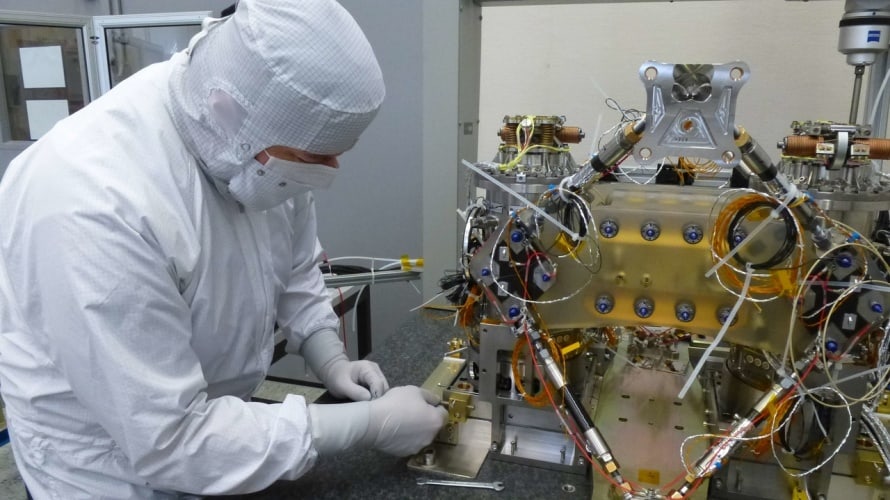Gravitational space lab LISA Pathfinder launches successfully
The European Space Agency’s (ESA’s) LISA Pathfinder has successfully launched from Kourou, French Guiana, beginning its mission to observe gravitational waves from space.

Led by scientists and engineers in the UK, the project will see Pathfinder travel 1.5 million kilometres towards the sun, where it will enter into orbit around a virtual point called L1. From here, it will attempt to detect gravitational waves - ripples in space time that arise from some of the most spectacular and important events in the universe, such as supernovas and double black holes.
To do so, Pathfinder is equipped with a unique onboard laboratory. This consists of two identical 46mm gold-platinum cubes, separated by 38cm. The cubes will be isolated from all forces other than gravity, and their relative positions will be measured to within a billionth of a millimetre by a complex system of lasers.

“LISA Pathfinder is one of the most unique European space missions to date, requiring engineering that has never been done before,’ said Dr Chris Castelli, director of programmes at the UK Space Agency. “We’re immensely proud that this challenging mission to discover the unseen part of our universe was built here in the UK.”
Register now to continue reading
Thanks for visiting The Engineer. You’ve now reached your monthly limit of news stories. Register for free to unlock unlimited access to all of our news coverage, as well as premium content including opinion, in-depth features and special reports.
Benefits of registering
-
In-depth insights and coverage of key emerging trends
-
Unrestricted access to special reports throughout the year
-
Daily technology news delivered straight to your inbox











Water Sector Talent Exodus Could Cripple The Sector
Maybe if things are essential for the running of a country and we want to pay a fair price we should be running these utilities on a not for profit...